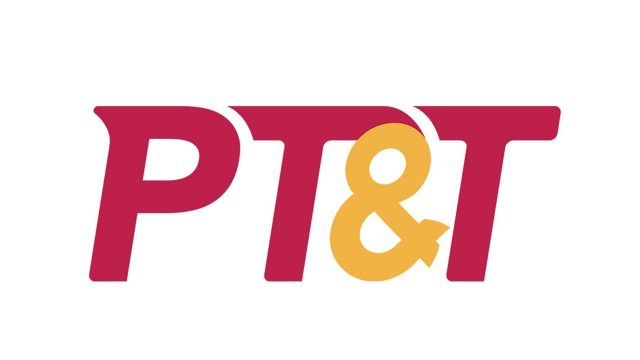What seems to motivate the National Government to issue, through the Department of Finance (DoF), Memorandum Circular No. 003-2024 directing Government-owned or -controlled corporations (GOCCs), including the Philippine Health Insurance Corp. (PhilHealth), to remit their “unused” government subsidies to the Bureau of the Treasury?
For PhilHealth, as we cited in our column in another broadsheet, some health reform advocates had rejected the circular as violative of the Universal Health Care Law. Six former health secretaries exhorted Finance Secretary Ralph Recto “to be sensitive to public opinion and exercise prudence and caution by not transferring the next tranche of funds and succeeding transfers.”
Of course, the second tranche was remitted a few days ago.
The DoF maintains that “using idle funds of government corporations for projects in health, social services and infrastructure does not affect the viability of participating corporations, and does not impair their delivery of services.”
But we know better.
Due to PhilHealth’s failure to use its funds, whether members’ contributions or government subsidies, in order to increase health coverage or reduce members’ premium, the National Government (NG) is now sequestering what it calls PhilHealth’s idle funds. But they qualify as idle funds only if PhilHealth had already achieved universal and affordable healthcare in the Philippines. The problem is that we are far from that state of affairs. Many Filipinos remain powerless over their health issues, many are dying because their medical coverage is hardly sufficient to give them even a minute probability of survival. Out-of-pocket expenses remain substantial, invariably beyond the reach of ordinary mortals.
Instead, the NG will be using the proceeds for projects in infrastructure and social services as well as probably various shapes and sizes of pork barrel projects. Why not compel PhilHealth to deliver on its actual mandate, instead of pulling out public subsidies, emasculating the institution and preventing it altogether from even expanding what it can and should do today?
Health, like education, is an investment in human capital, a sure-fire formula for economic transformation.
But the NG is arguing that sweeping idle funds of government-owned and -controlled corporations like PhilHealth “is a more prudent fiscal option than borrowing more or imposing new taxes.”
This hypothesis is valid if the issue is how best to finance the fiscal deficit. If it is, then sweeping really unused funds of GOCCs, or privatizing idle assets, should be one good means of maximizing public resources to close the gap between revenues and expenditures. But it is not valid because the issue is how to go about empowering public agencies like PhilHealth to deliver on universal healthcare, or Philippine Deposit Insurance Corp. to help stabilize the banking system.
In the first place, it is the business of the NG to ensure through its tax and borrowing authority or judicious spending that money is available to fund the national budget. GOCCs are created for specific public-goods purposes and hence, even subsidies are extended. If they make money, by law, they have to remit part of their earnings to the NG.
But sad to say, the NG brought upon itself this great urgency for raising funds for the national budget. It has opted to avoid imposing new taxes or higher tax rates even when the tax revenue effort has been stagnant at just over 14% in the last five years. Instead, the NG would rather rely on intensified tax administration. This has contributed to the decreasing fiscal space.
Before the pandemic, the fiscal deficit stood at only P660 billion or 3.4% of GDP. It rose to P1.7 trillion the following year or 8.6% of GDP. At the end of June 2024, revenues had already exceeded expenditures by P614 billion or 4.9%. That’s more than 10% of this year’s budget of P5.7 trillion.
With the enormous public spending during the pandemic with little scope for new taxes, the NG relied almost exclusively on borrowings. Public debt ballooned from P7.7 trillion in 2019 to P15.5 trillion at end-June 2024. In terms of GDP, public debt exploded from 39.6% to 60.9%, higher than the usual norm of debt sustainability. Further heavy borrowing could put at risk the Philippines’ credit rating and its cost of borrowing, both sovereign and corporate.
We should not be surprised that during the same period, interest payments also escalated, from P361 billion or 1.8% to P628 billion or 2.6% of GDP in 2023. As of June, interest payments had already hit P377 billion or 3% of GDP.
This is where the fiscal authorities are coming from in their current drive to mop up unused, idle, or sleeping funds from GOCCs. But come to think of it, there is some circularity of funding here.
For 2024, the national budget programmed P226.8 billion to support GOCCs. With the Finance circular, the NG expects to sweep the idle funds of GOCCs which, in its computation, could be as much as P89.9 billion for PhilHealth alone.
Dividend-wise, Finance expects to collect about P100 billion. As of May 6, some P88.6 billion had been received by the Treasury from top contributors such as LANDBANK and PDIC.
Budgetary support actually helps the GOCCs fulfill their respective mandates that the NG cannot by itself perform. Thus, underperforming GOCCs should be compelled to deliver on their mandates by, among others, fully utilizing their budget proper and the NG subsidies; capacitate them if necessary. It is not intuitive to sweep their “sleeping” funds and collect dividends from them. If they are able to perform as expected, accumulating on their equities, these GOCCs — if properly governed — should be able to reduce their reliance on annual subsidies.
But the challenge also lies in the budget process.
Between 2023 and 2024, Congress jacked up the national budget from P5.268 trillion to P5.767 trillion, an increase of nearly P500 billion or close to 10%. Abstracting from the aggregates, programmed appropriations rose by P348 billion or nearly 10%. It is not too wild to think that some non-priority expenditure items could have been retained as programmed to receive funding with greater certainty.
On the other hand, unprogrammed appropriations amounting to P731.4 billion look deceptively lower compared to last year’s appropriation of P807.2 billion. In reality, this amount is actually P449.5 billion higher than the P281.9 billion proposed by the Executive. With allocation higher than the original amount, the NG is hard pressed to produce the financing.
When expenditure items are reclassified as unprogrammed, the idea is that they are not priority projects and therefore, unless funding is available, they cannot be financed.
These are the kind of projects which were classified as unprogrammed appropriations:
1. Foreign assisted projects, P233.5 billion
2. Government infrastructure and social programs, P225.4 billion
3. Priority social programs for health under the Department of Health, social welfare and development under the Department of Social Welfare and Development, higher education under the Commission on Higher Education, and technical and vocational education under TESDA, P59 billion
4. Payment of personnel benefits, P59 billion
5. Pension and gratuity, P40.3 billion
Wow, these line items are supposed to be integral parts of various departments’ budget allocation! If less critical infrastructure and social expenditure items were retained under programmed appropriations, this means they get automatic funding.
What would our foreign creditors say when the local counterpart fund is conditional to availability of funds?
There are others elbowed out from the priority list: budgetary support for GOCCs (think of health), the AFP modernization program (think of the West Philippine Sea), the Pambansang Pabahay Para sa Pilipino (think of housing), and even routine maintenance of national roads (think of pot holes), and solar home system for rural electrification (think of power outages).
There is also a portion of the national budget called Special Purpose Funds which are released to public agencies when the specific purposes have been identified during budget execution within the fiscal year. With the operation of the Mandanas law, we are also seeing a higher allocation for local government units by over P60 billion. Due to the failure of Congress to address the pension fund of the military and uniformed personnel, we will incur a cost of P143 billion this year including those of veterans and civilian personnel.
With unprogrammed appropriations this year tipping the scale at P731.4 billion and with the estimated P100 billion from GOCCs’ dividends and whatever can be cornered from the “idle” funds of the GOCCs, the NG has no other option but to increase its borrowings both from the local and foreign capital markets, or consider new tax measures.
Leveraging on sleeping funds can help minimize the programmed amount of borrowing but only to a limited extent. It is hardly the fiscal measure of first resort. The end would hardly justify the means especially when it is a question of life and death for health, or the financial stability for our government financial institutions.
Diwa C. Guinigundo is the former deputy governor for the Monetary and Economics Sector, the Bangko Sentral ng Pilipinas (BSP). He served the BSP for 41 years. In 2001-2003, he was alternate executive director at the International Monetary Fund in Washington, DC. He is the senior pastor of the Fullness of Christ International Ministries in Mandaluyong.













